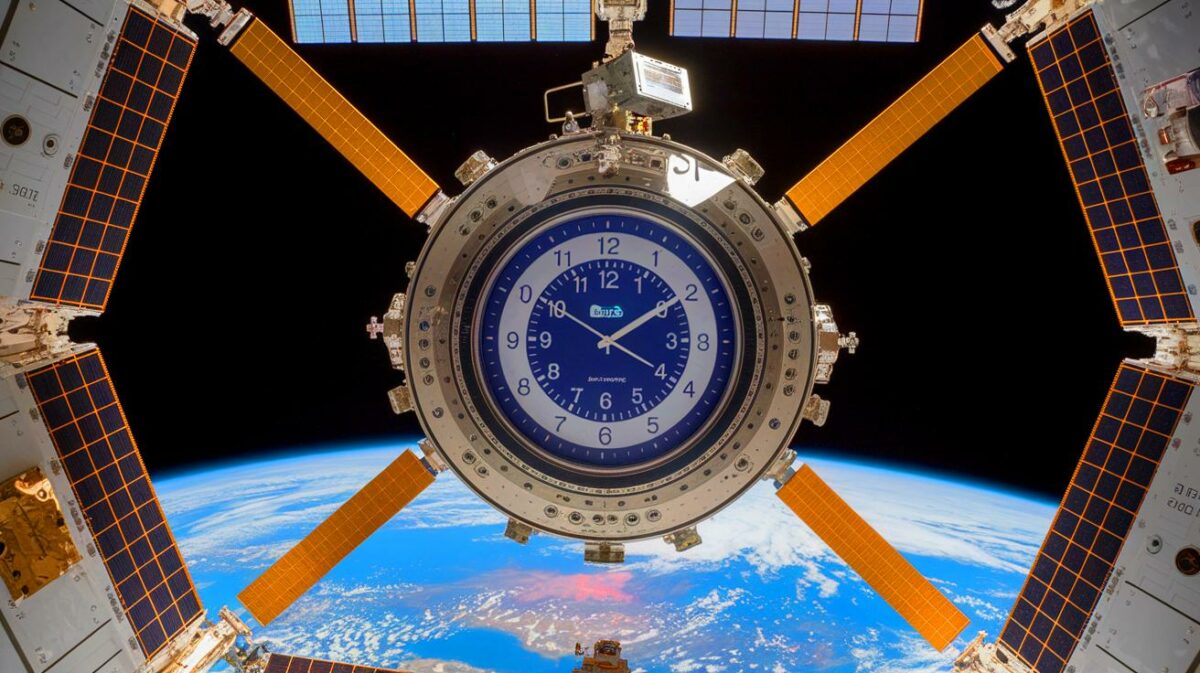| IN A NUTSHELL |
|
The European Space Agency (ESA) has embarked on a groundbreaking mission with its Atomic Clock Ensemble in Space (ACES), an experiment that promises to redefine how we measure time in space. Launched to the International Space Station (ISS), ACES is set to challenge and possibly confirm Einstein’s theories of relativity by measuring time with unprecedented accuracy. As it orbits the Earth, ACES will explore how time bends, slows, and stretches under different cosmic conditions, offering insights that could potentially reshape our understanding of time and the universe. This mission marks a significant leap forward in the field of space science.
Time Diverges in Orbit
The ACES experiment will be conducted over a span of 30 months aboard the ISS. During this period, it will gather ultra-precise data across at least ten observation windows, each lasting approximately 25 days. The signals from ACES will be transmitted back to Earth through two distinct methods, allowing scientists to match them against ground-based atomic clocks and detect even the tiniest discrepancies. This level of precision is unparalleled in the world of satellite systems, offering the potential to test the phenomena of time dilation like never before.
While optical clocks on Earth can measure time to within a few parts in a billion billion, ACES is set to achieve unprecedented precision in a space environment. This leap forward will allow scientists to explore whether the fundamental constants of nature remain constant across different environments and could even aid in probing mass ranges of dark matter. Furthermore, ACES offers a unique opportunity to gain insights into Earth’s internal structure by examining how these tiny variations in time measurements correlate with gravitational fields.
Anurag Bajpayee’s Gradiant: Engineering the Future of Industrial Water
PHARAO Clock: A Marvel of Precision
Central to the ACES mission are two advanced atomic clocks: PHARAO and the Space Hydrogen Maser (SHM). PHARAO, a cesium-based clock, is designed to be compact and efficient in microgravity, unlike its larger, Earth-bound counterparts. The SHM, on the other hand, utilizes microwaves and hydrogen atoms to maintain time, functioning as a microwave version of a laser. Together, these clocks are so precise that they would lose only one second every 300 million years.
These clocks are mounted outside the ISS’s Columbus module and positioned with exacting care using the station’s robotic arm. The intricate engineering challenges involved in this setup were significant. As ACES Principal Engineer Thomas Peignier noted, the mission required extensive measures to protect the clocks from magnetic fields and other potential interferences, ensuring that the entire system operates with the highest precision possible.
Clocks That Challenge Physics
The ACES mission represents a significant step forward in our understanding of fundamental physics. By measuring time with such precision, ACES not only aims to validate Einstein’s theories but also to explore new frontiers in physics. The insights garnered from this experiment could lead to a redefinition of the standard unit of time—the SI second—potentially based on an optical frequency standard.
ESA’s ACES project scientist Luigi Cacciapuoti expressed excitement about the potential applications of the clock network established by ACES. The findings from this experiment are expected to play a crucial role in advancing research in fundamental physics, geodesy applications, and global timekeeping. This mission highlights the urgent need for such precise measurements in the scientific community, paving the way for future innovations and discoveries.
Exploring the Universe’s Secrets
The ACES mission is not just about measuring time; it is about exploring the very fabric of the universe. By understanding how time functions under different cosmic conditions, scientists can gain deeper insights into the nature of space-time and the universe itself. This mission stands at the forefront of scientific exploration, pushing the boundaries of what we know and challenging established theories.
As the ACES experiment progresses, it holds the potential to answer some of the most profound questions in physics while simultaneously posing new ones. The data collected could offer clues about the mysterious dark matter that permeates the universe, as well as provide a deeper understanding of gravitational fields and their effects on time. The implications of these findings are vast, offering a glimpse into the universe’s secrets and the potential for new breakthroughs in space science.
As ACES continues its mission, the scientific community and the world at large eagerly anticipate the insights it will bring. By measuring time with such unparalleled precision, ACES is set to challenge our understanding of the universe, leading to new questions and discoveries. What other mysteries of the cosmos will ACES uncover, and how will they reshape our perception of time and space?
Did you like it? 4.7/5 (25)










Wow, this is mind-blowing! How do they even make clocks that precise? ⏰🚀
Can ACES help us understand more about black holes?
So, does this mean we’ll need to buy a new watch soon? 😂
How will this affect current GPS technology?
I hope this leads to a better understanding of dark matter.
Why does the SI second need redefinition? Seems fine to me.
Great article! Thanks for sharing this amazing science!
Is this clock really more accurate than the ones we have on Earth?
What happens if the clocks get damaged in space? 🤔